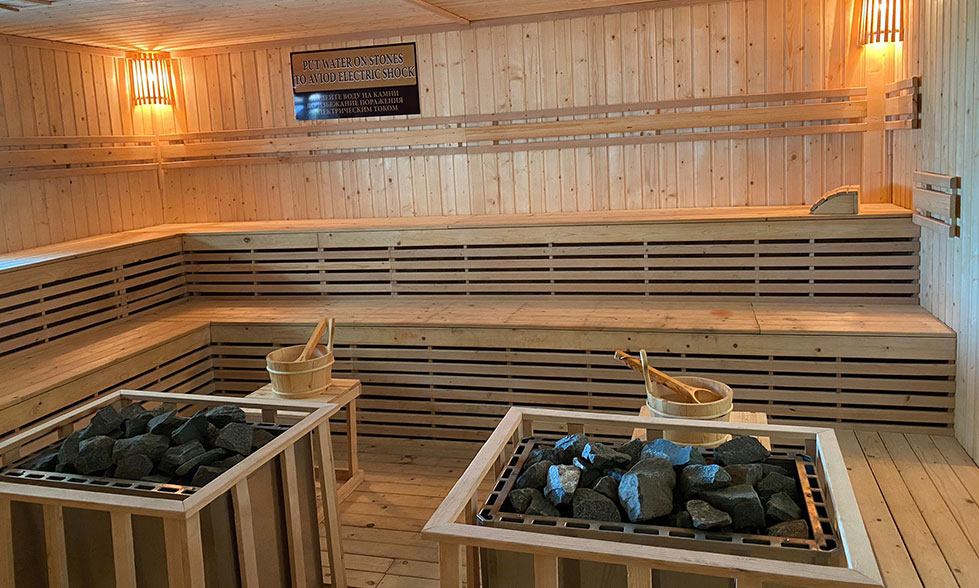The Ultimate Recovery Duo: Saunas and Cold Plunges for Fitness and Wellness

When it comes to optimising recovery and boosting overall health, saunas and cold plunges are a dynamic duo that should not be overlooked. Whether you’re a Muay Thai fighter pushing your body to the limit or a yogi striving for balance and inner peace, incorporating these practices into your routine can offer profound benefits. At Battle Conquer Gym, our Muay Thai and Yoga retreat in Thailand, we understand the importance of recovery, which is why we emphasise the use of saunas and cold plunges to help our guests achieve peak physical and mental wellness.
The Science Behind Saunas and Cold Plunges
Before diving into the benefits, it’s essential to understand how saunas and cold plunges work. Both practices involve exposing your body to extreme temperatures, but in opposite directions.
- Saunas typically involve sitting in a dry or steam-filled room heated to temperatures between 70°C to 100°C (158°F to 212°F). The heat induces sweating, increases heart rate, and promotes relaxation.
- Cold plunges or cold baths involve immersing your body in water that is typically between 10°C to 15°C (50°F to 59°F). This exposure to cold triggers a host of physiological responses, including the constriction of blood vessels and a surge of adrenaline.
When used in combination, these temperature extremes can enhance recovery, improve performance, and support overall health in several ways.
1. Enhanced Muscle Recovery
For those training intensively in Muay Thai, strength building, or engaging in vigorous yoga sessions, muscle recovery is crucial. Saunas help by increasing blood circulation, which brings more oxygen and nutrients to tired muscles, aiding in their repair. The heat also helps to relax muscle tension and reduce soreness, making it easier to bounce back from tough workouts.
Cold plunges, on the other hand, are known for their anti-inflammatory effects. When you immerse your body in cold water, it causes your blood vessels to constrict, reducing inflammation and swelling in muscles and joints. This is particularly beneficial after a high-intensity workout or a sparring session in Muay Thai, as it helps to minimise muscle damage and speed up recovery.
2. Improved Cardiovascular Health
Regular sauna use has been shown to have a positive impact on cardiovascular health. The heat causes your heart rate to increase, similar to moderate exercise, which can improve heart function and lower blood pressure over time. This can be especially beneficial for Muay Thai practitioners, as a strong cardiovascular system is key to maintaining endurance and stamina in the ring.
Cold plunges also play a role in cardiovascular health by improving circulation. The cold causes your body to work harder to maintain its core temperature, which increases blood flow and strengthens the circulatory system. Alternating between sauna and cold plunge sessions, known as contrast therapy, can further enhance these benefits, giving your cardiovascular system a well-rounded workout.
3. Boosted Immune System
Both saunas and cold plunges have been linked to a stronger immune system. The heat from the sauna induces a fever-like state in the body, which can help stimulate the production of white blood cells, enhancing your immune response. This is particularly valuable for those who train regularly, as intense physical activity can sometimes suppress the immune system, making you more susceptible to illness.
Cold plunges, while initially shocking to the system, have been shown to increase the production of norepinephrine, a hormone that plays a key role in the immune response. Regular exposure to cold can also increase the body’s resilience to stress, both physical and mental, further supporting overall health.
4. Stress Relief and Mental Clarity
Beyond the physical benefits, saunas and cold plunges are powerful tools for mental health and well-being. The sauna is a place of relaxation, where the heat helps to soothe the mind and body, reduce stress, and promote a sense of calm. The practice of sitting quietly in the warmth, focusing on your breath, can be a meditative experience, aligning perfectly with the mindfulness principles of yoga.
Cold plunges, while invigorating, can also help to sharpen mental clarity and focus. The initial shock of the cold requires you to concentrate on your breath and stay present, creating a sense of mental alertness and resilience. Over time, regularly practicing cold plunges can help to improve your ability to manage stress and enhance your overall mental toughness.
5. Detoxification and Skin Health
One of the most well-known benefits of saunas is their ability to promote detoxification. The intense heat induces sweating, which helps to flush toxins and impurities from the skin. This not only aids in detoxifying the body but also contributes to clearer, healthier skin. The increased blood flow during a sauna session also nourishes the skin, giving it a natural glow.
Cold plunges complement this by tightening the skin and reducing puffiness. The cold water constricts the pores, which helps to close them after a sauna session, sealing in the benefits of the detoxification process. Regular use of cold plunges can also improve skin elasticity, contributing to a more youthful appearance.
Integrating Saunas and Cold Plunges into Your Routine
At Battle Conquer Gym, our Muay Thai and Yoga retreat in Thailand, we believe that recovery is just as important as the training itself. By incorporating saunas and cold plunges into your fitness and wellness routine, you can accelerate recovery, improve performance, and enhance your overall health. Whether you’re here to train like a fighter or to find your inner zen, these practices offer powerful benefits that will leave you feeling rejuvenated, resilient, and ready to take on whatever challenges come your way.
So, next time you step off the mat or finish a session on the bag, make sure to treat your body to the ultimate recovery duo of saunas and cold plunges. Your muscles, mind, and spirit will thank you.
Author Anjali Talcherkar